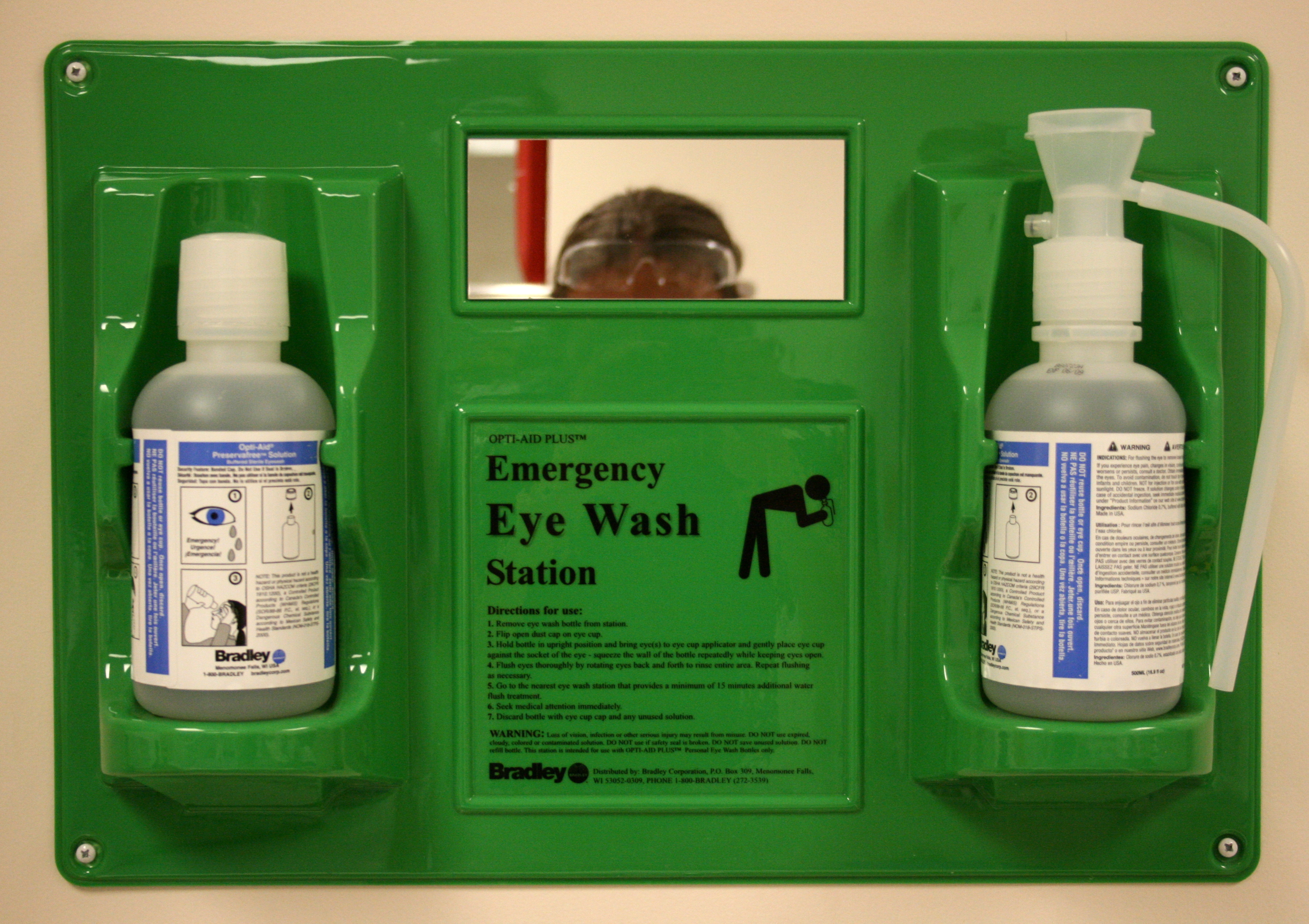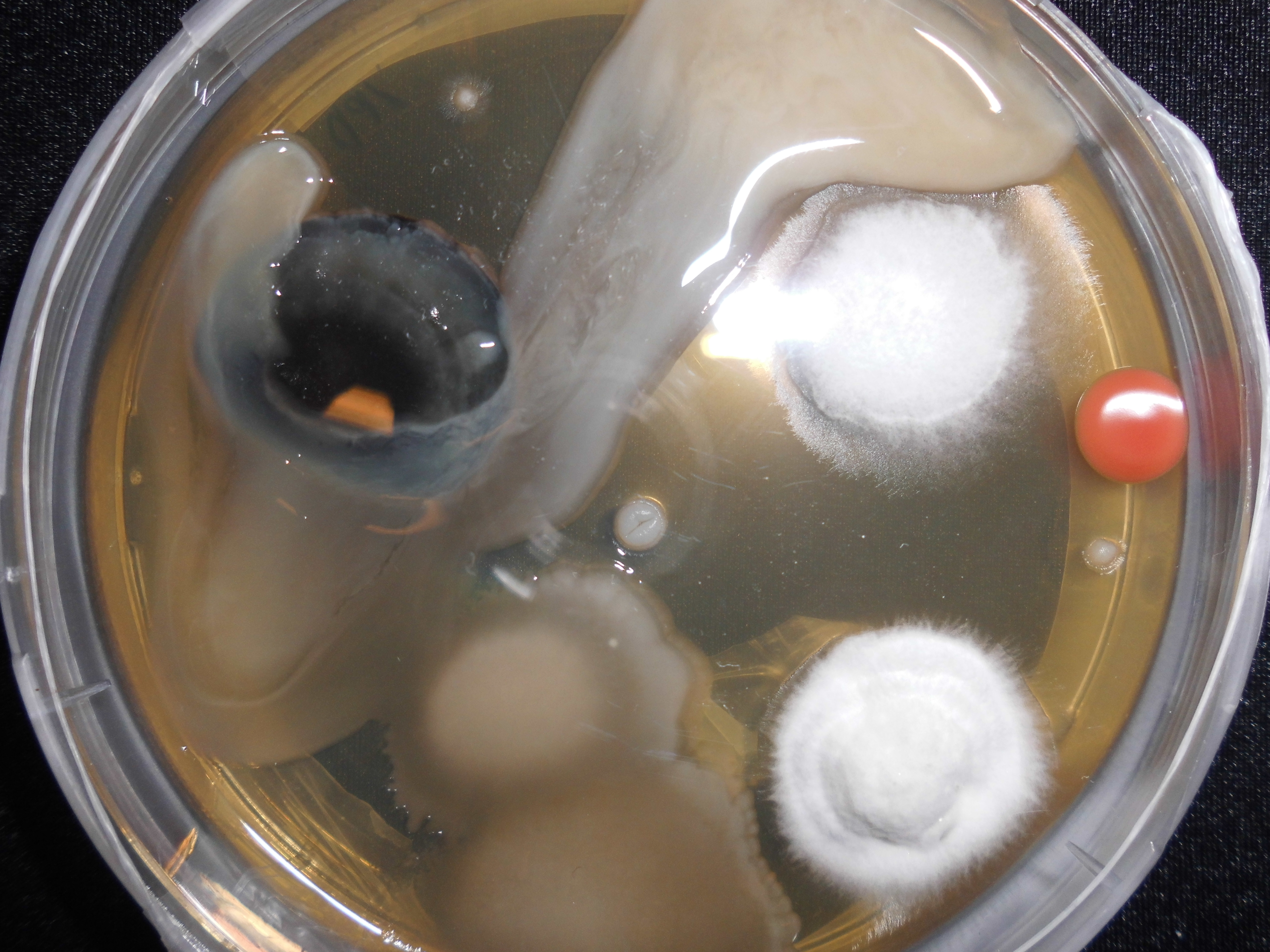|
Eyewash
Eyewash is a fluid, commonly saline, used to physically wash the eyes in the case that they may be contaminated by foreign materials or substances. Eyewashes may be beneficial to those with sensitive eyes and can provide relief to the painful side effects of sensitivity. However, prolonged usage of such products will cause mild side effects, such as the reddening of the eye and/or pupil and cause itchiness. Occupational safety In the United States, the Occupational Safety and Health Administration The Occupational Safety and Health Administration (OSHA; ) is a regulatory agency of the United States Department of Labor that originally had federal visitorial powers to inspect and examine workplaces. The United States Congress established ... (OSHA) was created as a result of the Occupational Safety and Health Act of 1970. The law was created to help further protect employee safety while providing "safe & healthful working conditions." OSHA's primary eyewash standard, 29 ... [...More Info...] [...Related Items...] OR: [Wikipedia] [Google] [Baidu] |
Saline (medicine)
Saline (also known as saline solution) is a mixture of sodium chloride (salt) and water. It has a number of uses in medicine including cleaning wounds, removal and storage of contact lenses, and help with dry eyes. By injection into a vein, it is used to treat hypovolemia such as that from gastroenteritis and diabetic ketoacidosis. Large amounts may result in fluid overload, swelling, acidosis, and high blood sodium. In those with long-standing low blood sodium, excessive use may result in osmotic demyelination syndrome. Saline is in the crystalloid family of medications. It is most commonly used as a sterile 9 g of salt per litre (0.9%) solution, known as ''normal saline''. Higher and lower concentrations may also occasionally be used. Saline is acidic, with a pH of 5.5 (due mainly to dissolved carbon dioxide). The medical use of saline began around 1831. It is on the World Health Organization's List of Essential Medicines. In 2022, sodium salts was the 2 ... [...More Info...] [...Related Items...] OR: [Wikipedia] [Google] [Baidu] |
Contaminate
Contamination is the presence of a constituent, impurity, or some other undesirable element that renders something unsuitable, unfit or harmful for the physical body, natural environment, workplace, etc. Types of contamination Within the sciences, the word "contamination" can take on a variety of subtle differences in meaning, whether the contaminant is a solid or a liquid, as well as the variance of environment the contaminant is found to be in. A contaminant may even be more abstract, as in the case of an unwanted energy source that may interfere with a process. The following represent examples of different types of contamination based on these and other variances. Chemical contamination In chemistry, the term "contamination" usually describes a single constituent, but in specialized fields the term can also mean chemical mixtures, even up to the level of cellular materials. All chemicals contain some level of impurity. Contamination may be recognized or not and may become an ... [...More Info...] [...Related Items...] OR: [Wikipedia] [Google] [Baidu] |
Side Effects
In medicine, a side effect is an effect of the use of a medicinal drug or other treatment, usually adverse but sometimes beneficial, that is unintended. Herbal and traditional medicines also have side effects. A drug or procedure usually used for a specific effect may be used specifically because of a beneficial side-effect; this is termed " off-label use" until such use is approved. For instance, X-rays have long been used as an imaging technique; the discovery of their oncolytic capability led to their use in radiotherapy for ablation of malignant tumours. Frequency of side effects The World Health Organization and other health organisations characterise the probability of experiencing side effects as: * Very common, ≥ 1⁄10 * Common (frequent), 1⁄10 to 1⁄100 * Uncommon (infrequent), 1⁄100 to 1⁄1000 * Rare, 1⁄1000 to 1⁄10000 * Very rare, < 1⁄10000 The |
United States
The United States of America (USA), also known as the United States (U.S.) or America, is a country primarily located in North America. It is a federal republic of 50 U.S. state, states and a federal capital district, Washington, D.C. The 48 contiguous states border Canada to the north and Mexico to the south, with the semi-exclave of Alaska in the northwest and the archipelago of Hawaii in the Pacific Ocean. The United States asserts sovereignty over five Territories of the United States, major island territories and United States Minor Outlying Islands, various uninhabited islands in Oceania and the Caribbean. It is a megadiverse country, with the world's List of countries and dependencies by area, third-largest land area and List of countries and dependencies by population, third-largest population, exceeding 340 million. Its three Metropolitan statistical areas by population, largest metropolitan areas are New York metropolitan area, New York, Greater Los Angeles, Los Angel ... [...More Info...] [...Related Items...] OR: [Wikipedia] [Google] [Baidu] |
Occupational Safety And Health Administration
The Occupational Safety and Health Administration (OSHA; ) is a regulatory agency of the United States Department of Labor that originally had federal visitorial powers to inspect and examine workplaces. The United States Congress established the agency under the Occupational Safety and Health Act (OSH Act), which President Richard Nixon, Richard M. Nixon signed into law on December 29, 1970. OSHA's mission is to "assure safe and healthy working conditions for working men and women by setting and enforcing standards and by providing training, outreach, education, and assistance." The agency is also charged with enforcing a variety of whistleblower statutes and regulations. OSHA's workplace safety inspections have been shown to reduce injury rates and injury costs without adverse effects on employment, sales, credit ratings, or firm survival. History The Bureau of Labor Standards of the Department of Labor has worked on some work safety issues since its creation in 1934. Economi ... [...More Info...] [...Related Items...] OR: [Wikipedia] [Google] [Baidu] |
Occupational Safety And Health Act Of 1970
The Occupational Safety and Health Act of 1970 is a US labor law governing the federal law of occupational health and safety in the private sector and federal government in the United States. It was enacted by Congress in 1970 and was signed by President Richard Nixon on December 29, 1970. Its main goal is to ensure that employers provide employees with an environment free from recognized hazards, such as exposure to toxic chemicals, excessive noise levels, mechanical dangers, heat or cold stress, or unsanitary conditions. The Act created the Occupational Safety and Health Administration (OSHA) and the National Institute for Occupational Safety and Health (NIOSH). The Act can be found in the United States Code at title 29, chapter 15. History of federal workplace safety legislation Few workplace health and safety protections were available through the federal government before the passage of OSHA. The American system of mass production encouraged the use of machinery, while the ... [...More Info...] [...Related Items...] OR: [Wikipedia] [Google] [Baidu] |




